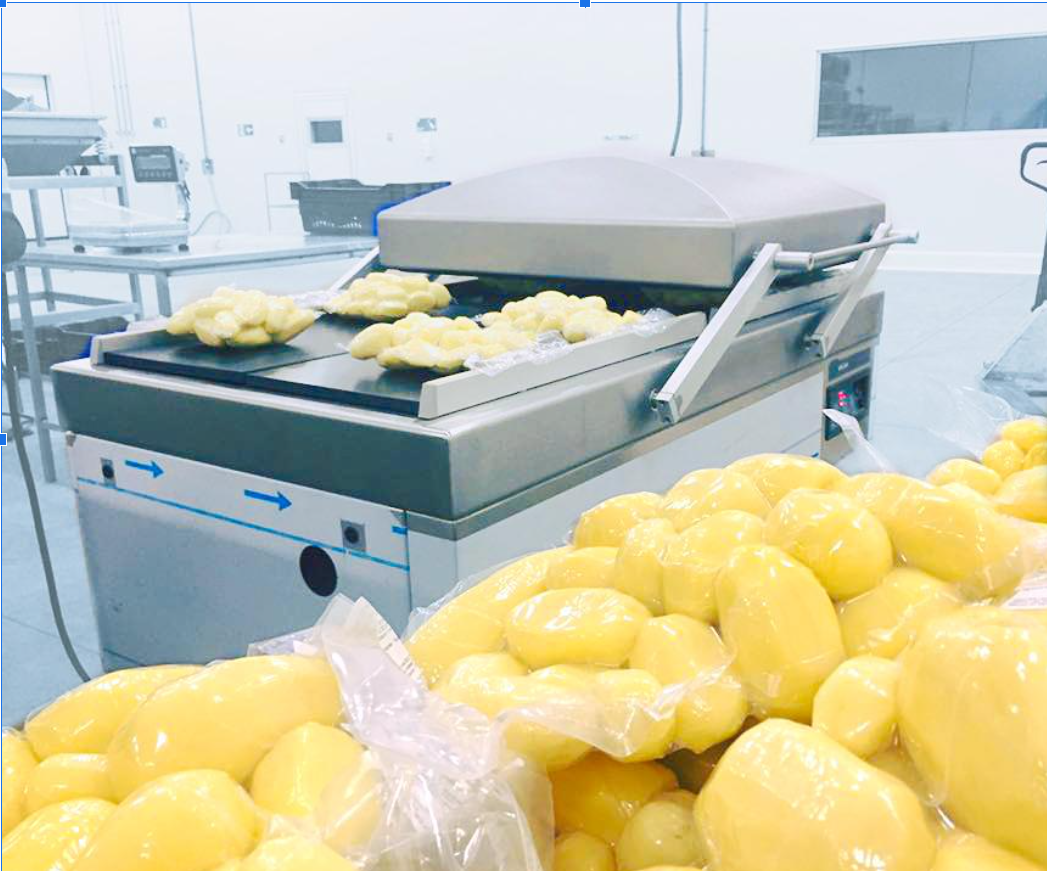Use A Vacuum Sealer To Marinate Meat In Minutes!

How to quickly and easily marinate meat using a chamber vacuum sealer
Using a Henkelman Chamber Vacuum Sealer with CombiVAC “red meat function,” you can rapidly marinate meat in minutes! This can be a great way to save on prep time and add value for your customers in any commercial kitchen setting!
Follow these steps to quickly and easily marinate meat in a chamber vacuum sealer:
- Place meat or protein in a food-safe vacuum seal bag.
- Add a marinade of your choice to the bag, ensure the seal area of the bag is kept dry.
- Place the vacuum seal bag in the chamber vacuum sealer, and simply press the pre-programmed “Red Meat” function on your CombiVAC control panel.
- Remove the now sealed vacuum bag and place it in the refrigerator until you’re ready to cook and serve!
How Does A Steak Rapidly Marinate?
When you activate the CombiVAC red-meat function pre-programmed on all of our Boxer models, this helps distribute liquids evenly throughout the meat by stretching and contracting the protein fibers for a deep and rapid infusion of flavors! It’s really that easy with a Henkelman Chamber Vacuum Sealer!
If you don’t have a Henkelman (think about your life choices for a moment), you can run multiple manual cycles. Jokes aside, we’d recommend running at least two full cycles.
When most people think about marinating meat, they think about soaking it in a bowl of sauce overnight. While this is certainly one way to do it, other methods can be just as effective – and much faster! One great way to marinate meat quickly is using a chamber vacuum sealer. This can be a huge time and money saver in a commercial kitchen environment — especially for Full-Service Restaurants, Hotels & Resorts, and Grocers who need to maximize labor without compromising service!If you don’t have a Henkelman (think about your life choices for a moment), you can run multiple manual cycles. Jokes aside, we’d recommend running at least two full cycles.
With your Henkelman CombiVAC chamber vacuum sealer by your side, all you’ll need is a vacuum seal bag, some marinade, and the meat of your choice.
Here’s a quick steak marinade recipe:
When it comes to marinating meat, there are endless possibilities when it comes to recipes. However, if you’re looking for a great place to start, why not try this easy steak marinade recipe?
Ingredients:
- 1/2 cup soy sauce
- 1/4 cup olive oil
- 1/4 cup red wine vinegar
- 2 tablespoons brown sugar
- 1 tablespoon minced garlic
- 1 teaspoon dried oregano
- 1/2 teaspoon ground black pepper
- 1/2 teaspoon salt
- 1/4 teaspoon cayenne pepper
- 2 pounds skirt or flank steak, trimmed of excess fat
Instructions:
- In a large vacuum seal bag, combine the soy sauce, olive oil, red wine vinegar, brown sugar, garlic, oregano, black pepper, salt, and cayenne pepper.
- Add the steak to the vacuum seal bag.
- Massage the bag to ensure that the steak is coated in the marinade.
- Rapidly marinate the steak with the CombiVAC “red meat” function or manual cycles. Your steak is now fully marinated in minutes versus hours using traditional methods!
- Preheat your grill to medium-high heat.
- Grill the steak for 6 to 8 minutes per side, or until cooked through to temp.
- Let the steak rest for 5 minutes before slicing against the grain.
With a chamber vacuum sealer, you can quickly and easily marinate meat in any marinade you like. This steak marinade recipe is a great place to start, but feel free to get creative!
If you’re looking for a way to save time and money in your commercial kitchen, or if you want to ensure that the meat stays moist before cooking, marinating with a Chamber Vacuum Sealer is a great option! The benefits of using this method in any commercial kitchen include savings on labor and reducing food waste through prolonged shelf life. Additionally, if you’re a grocer, consider pre-marinated steak, chicken, or pork as a convenient choice for busy customers!
Give it a try for yourself and taste the difference!




